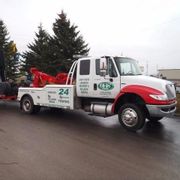
Dealing with a flat tire and the need for roadside assistance can be daunting. Knowing the basics of locating, maintaining, and driving on a spare can make this difficult situation less stressful. Read these answers to frequently asked questions to prepare yourself for any unexpected spare tire emergencies.
Common Questions Regarding Spare Tires
How fast should you drive with a spare?
Spare tires are not designed for everyday travel since they have weaker rubber walls and higher pressure than a typical tire. They are also smaller and can imbalance the car frame if used improperly. Drive on the spare for as short of a distance as possible, and don’t exceed 50 miles per hour since faster speeds can wear down the small tire quicker and cause it to blow out if you hit a pothole.
Avoid highways and take side roads. If driving on the highway is necessary, keep to the right and turn on the hazard lights to warn others of your low speeds.
Where is the spare tire located?
 This varies by vehicle. For trucks and minivans, the spare is usually beneath the chassis. Sedans and smaller cars often place it under a panel in the trunk. Certain foreign cars may place the spare in the engine compartment.
This varies by vehicle. For trucks and minivans, the spare is usually beneath the chassis. Sedans and smaller cars often place it under a panel in the trunk. Certain foreign cars may place the spare in the engine compartment.
In order to save weight and space, some modern makes and models no longer carry a spare at all. If you can’t find the spare, check the owner’s manual. You can also contact a roadside assistance team for help. They can locate the spare tire or provide towing if necessary.
How long does a spare tire last?
The upper limit for driving on a spare is 100 miles. Once a spare tire has been used, it should be discarded and replaced. Unused spare tires should be inspected every six months to check for cracks, dry rot, and proper inflation levels.
60 PSI is the standard pressure for a spare. If it frequently needs extra air, it has become unreliable. Spare tires can be expected to last seven to ten years without use.
Can spare tires be swapped between vehicles?
No, even though extra tires are smaller and lighter than regular ones, they are still sized for specific cars. Don’t try to exchange spare tires unless the vehicles are the exact same make and model. Doing so could cause damage to the lug bolts and other wheel hardware.
Differences in weight rating can also create an unsafe situation. It’s better to wait for a properly sized tire or a tow truck than to use someone else’s spare.
If you need roadside assistance, contact the team at OHS Towing in Columbia Falls, MT. With a 24-hour towing hotline, their dependable drivers will quickly get you back on track. Call them anytime at (406) 892- 1600 or visit their website to learn more about the services they provide to the Flathead Valley.
About the Business
Have a question? Ask the experts!
Send your question

